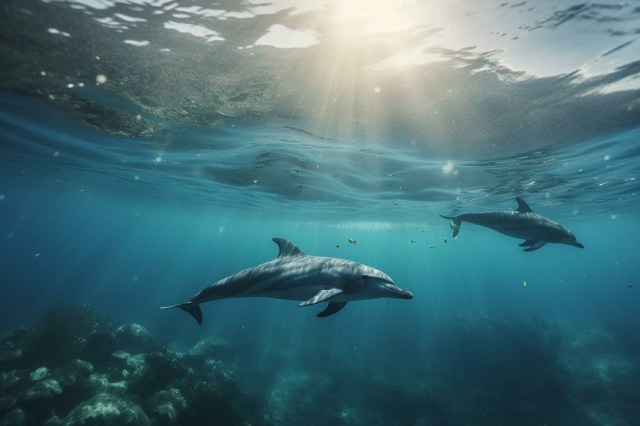The Fascinating World of Dolphin Communication Underwater: What You Need to Know

Dolphins are known for their intelligence, social behavior, and remarkable communication skills. These majestic creatures have captivated the human imagination for centuries. But how do dolphins communicate underwater? In this article, we will delve into the fascinating world of dolphin communication and explore the various methods they use to interact with each other beneath the waves.
Vocalizations
Underwater, dolphins rely heavily on vocalizations to communicate with one another. These vocalizations can take various forms, including clicks, whistles, and burst-pulsed sounds. One of the most common types of vocalization is echolocation clicks. Dolphins emit a series of rapid clicks that bounce off objects in their environment and provide them with valuable information about their surroundings.
Whistles are another important form of vocalization used by dolphins underwater. Each dolphin has its own unique whistle that acts as its individual signature or “name.” Whistles allow dolphins to identify themselves and maintain contact within their social groups. Dolphins also use whistles during courtship displays or when they want to convey a specific message to other members of their pod.
Body Language
While vocalizations play a significant role in dolphin communication underwater, body language is equally important. Dolphins use a variety of physical gestures and movements to convey messages to one another. For example, they may engage in synchronized swimming or leaping out of the water as a way to demonstrate unity within their pod.
Tail slapping is another common form of body language used by dolphins underwater. When a dolphin slaps its tail against the surface of the water, it can signal aggression or territoriality towards other dolphins or potential threats in its vicinity. On the other hand, gentle nudges or rubs between individuals indicate affection and social bonding.
Click Communication
In addition to echolocation clicks used for navigation purposes, dolphins also utilize click communication to convey specific messages. Click communication involves the production of distinct click patterns with different meanings. These clicks can indicate warnings, requests for assistance, or even social greetings.
Research has shown that dolphins have a remarkable ability to understand and interpret click communication from other individuals within their pod. They can distinguish between different click patterns and respond accordingly, showcasing their highly developed cognitive abilities.
Complex Social Structure
Dolphin communication underwater is also influenced by their complex social structure. Dolphins live in groups called pods, which consist of several individuals. Within these pods, there are hierarchies and social bonds that shape how dolphins interact with one another.
Dominant males often play a crucial role in leading the pod and maintaining order within the group. They use vocalizations, body language, and physical contact to assert their dominance and establish their position within the hierarchy. Other members of the pod follow these cues to navigate their social interactions effectively.
In conclusion, dolphin communication underwater is a fascinating subject that showcases the intelligence and social complexity of these marine mammals. Through vocalizations, body language, click communication, and a complex social structure, dolphins are able to communicate effectively with each other beneath the waves. Understanding how dolphins communicate can provide valuable insights into their behavior and enhance our appreciation for these incredible creatures.
This text was generated using a large language model, and select text has been reviewed and moderated for purposes such as readability.





